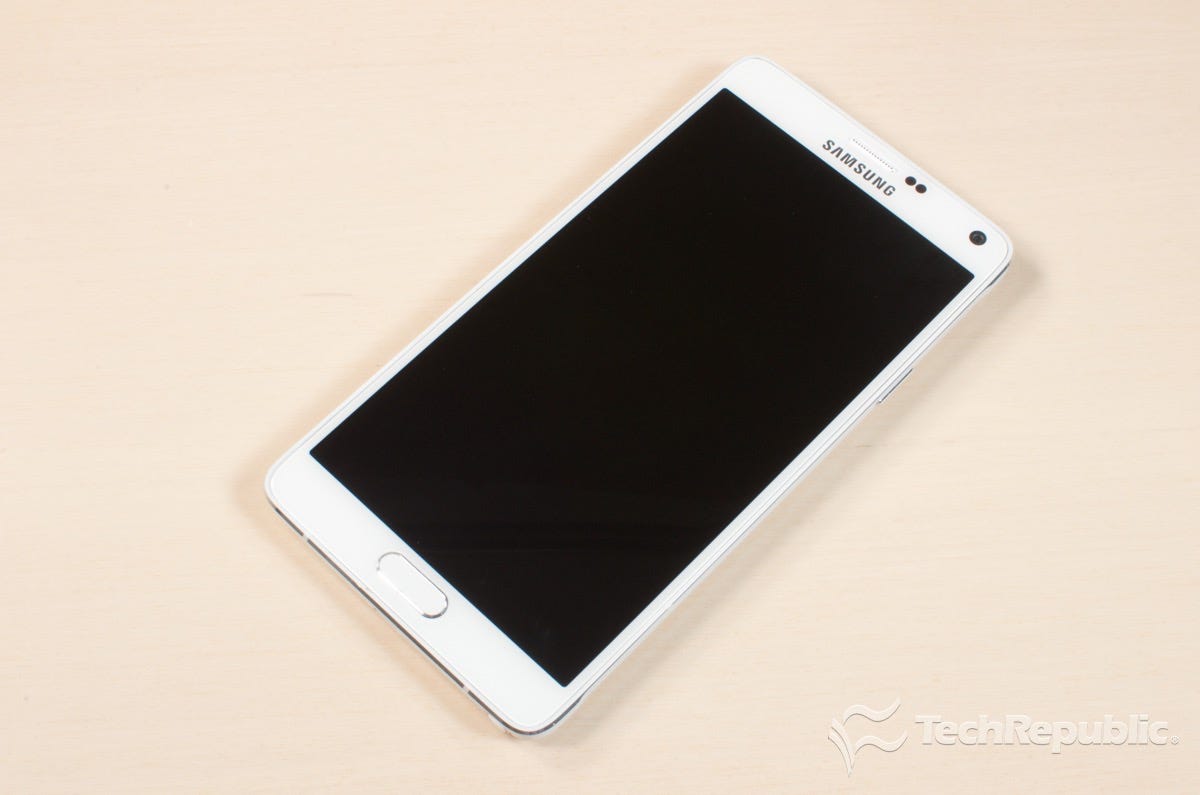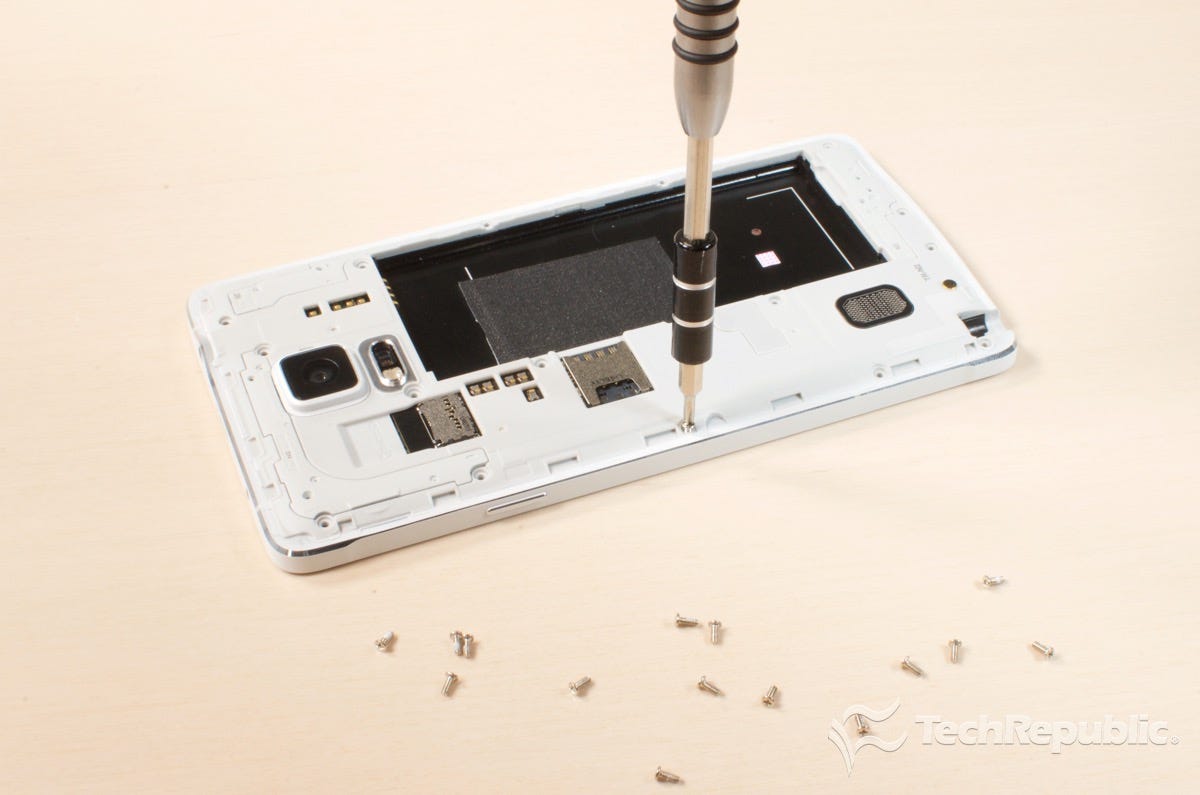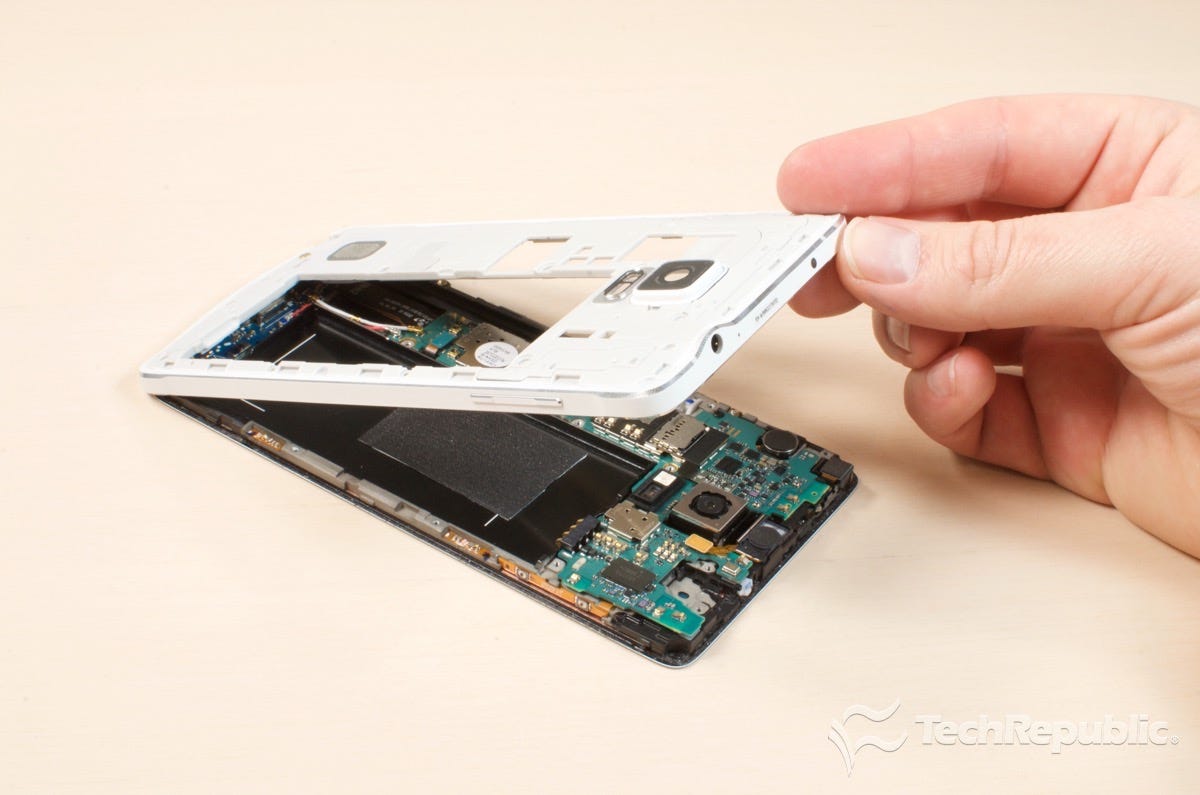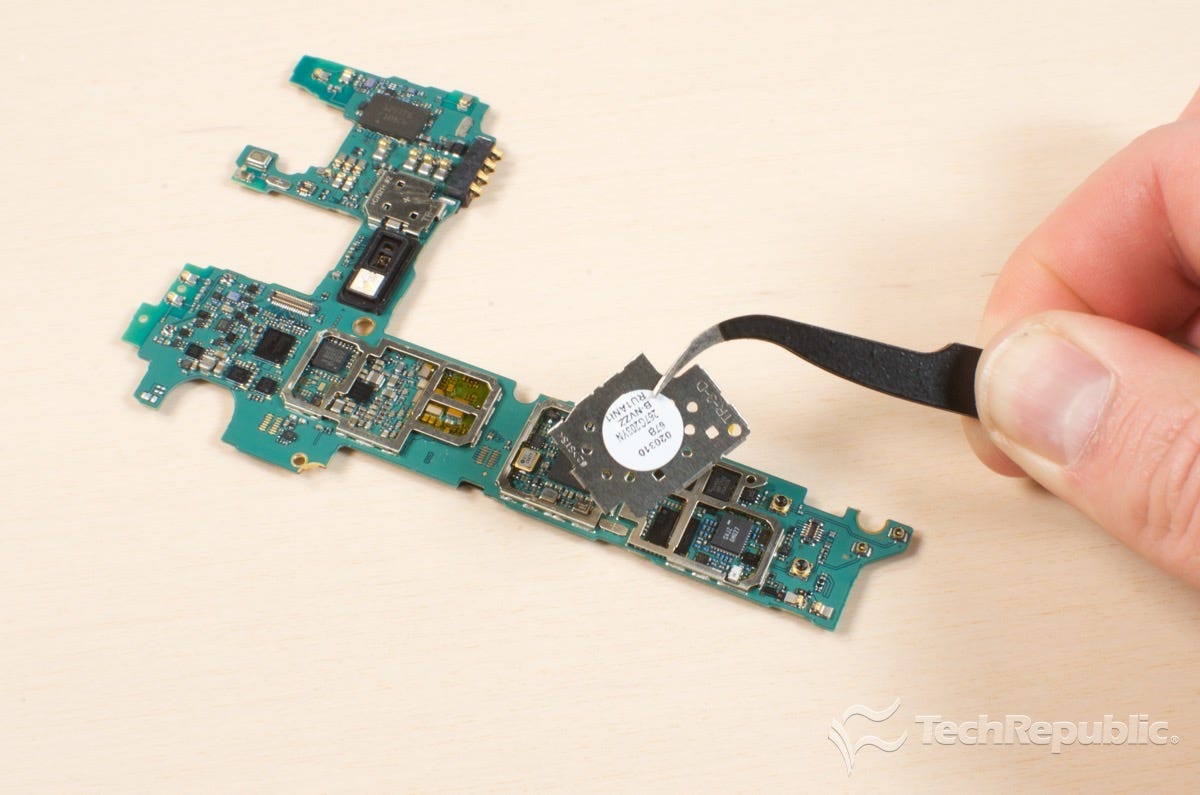

Now playing:
Watch this:
Cracking Open: Samsung Galaxy Note 4
3:47
From the outside, the Samsung Galaxy Note 4 looks a lot like the previous model, but Samsung has made several subtle design changes that make the device more difficult to disassemble and repair than previous Notes.
With nearly every phone maker — including Apple — offering an oversize phone, the Galaxy Note 4
(which practically created the phablet category) can’t really compete on size alone. Luckily, it has some pretty nice hardware to go along with its beautiful 5.7-inch quad HD AMOLED (2,650×1,440p at 515 ppi).
Such as a 2.7GHz Qualcomm Snapdragon 805 processor or 1.9GHz octa-core Exynos 5433 chip, 3GB of RAM, 32GB of internal storage, a 16-megapixel rear-facing camera, a 3,220mAh battery and of course the phone’s signature feature — the S-pen stylus.

Bill Detwiler/TechRepublic
For more information on the Galaxy Note 4
, including real-world tests and pricing, check out Jessica Dolcourt’s full CNET review .
Along with the hardware upgrades, Samsung made several design changes inside the phone, but in doing so, the company made the handset a real pain to crack open and reassemble.
Cracking Open observations
- Repositioned SIM and microSD card slots: The Galaxy Note 3’s SIM and microSD card slots were stacked on top of each other and located above the battery. On the Note 4, the slots are separated and located to the left of the battery. In my opinion, the new configuration is an improvement over the previous design as it makes the cards easier to install and remove.
- Redesigned internal cover: Once you remove the phone’s back cover (which gives you access to the card slots and battery), you’ll need to remove a separate, internal cover to access the motherboard and internal hardware. The same configuration was used on the Note 3. Unfortunately, the rim/edge of the Note 4’s case is part of this internal cover, instead of the front panel and frame assembly as it was on the Note 3. There’s also a thin adhesive seal that runs along the inside of the rim and helps hold the front panel to the internal cover. Both of these design elements make the cover much more difficult to remove and reinstall than the Note 3’s internal cover.
- Screws abound: There are over a dozen screws holding the internal cover to the front panel and frame assembly as well as a few screws inside the case. Luckily, you can remove all of them with a Phillips #000 screwdriver, and there are only two lengths.
- Repositioned headphone
jack: The Note 3’s 3.5mm headphone jack was mounted to the internal frame, which also held the main circuit board, cameras and other components. The Note 4’s jack (along with the external speaker) is attached to the internal cover. - Front panel/display difficult to remove without damage: The front panel and display are held to the internal frame with adhesive, and there’s a thin layer of foil behind the display. It’s nearly impossible to remove the front panel/display assembly from the frame without damaging this foil.
- Redesigned motherboard: Unlike the Note 3’s mostly rectangular motherboard (which had most of the chips clustered at the top), the Note 4’s L-shaped main board has most of its ICs running along the side. Neither the shape change nor the repositioned chips negatively affect the teardown process, but another change does. Samsung placed several cable connectors on the side of the board that faces the Note 4’s display. Without separating the front panel and display assembly from the internal frame, it’s extremely difficult to fully seat the connectors when reinstalling the board. And because removing the front panel assembly is difficult to accomplish without damaging the display (see above), reinstalling the board is a real pain.


Bill Detwiler/TechRepublic


Bill Detwiler/TechRepublic


Bill Detwiler/TechRepublic
Better hardware, worse repairability
From a hardware and design perspective, Samsung took one step forward and one step back with the Galaxy Note 4
. The company gave its phablet a better display, faster processor, better camera, and a much improved S-pen. Unfortunately, Samsung engineers also made the handset harder to disassemble and repair.
To see more photos of our Samsung Galaxy Note 4
teardown, check out the full Cracking Open gallery on TechRepublic, CNET’s sister site.



